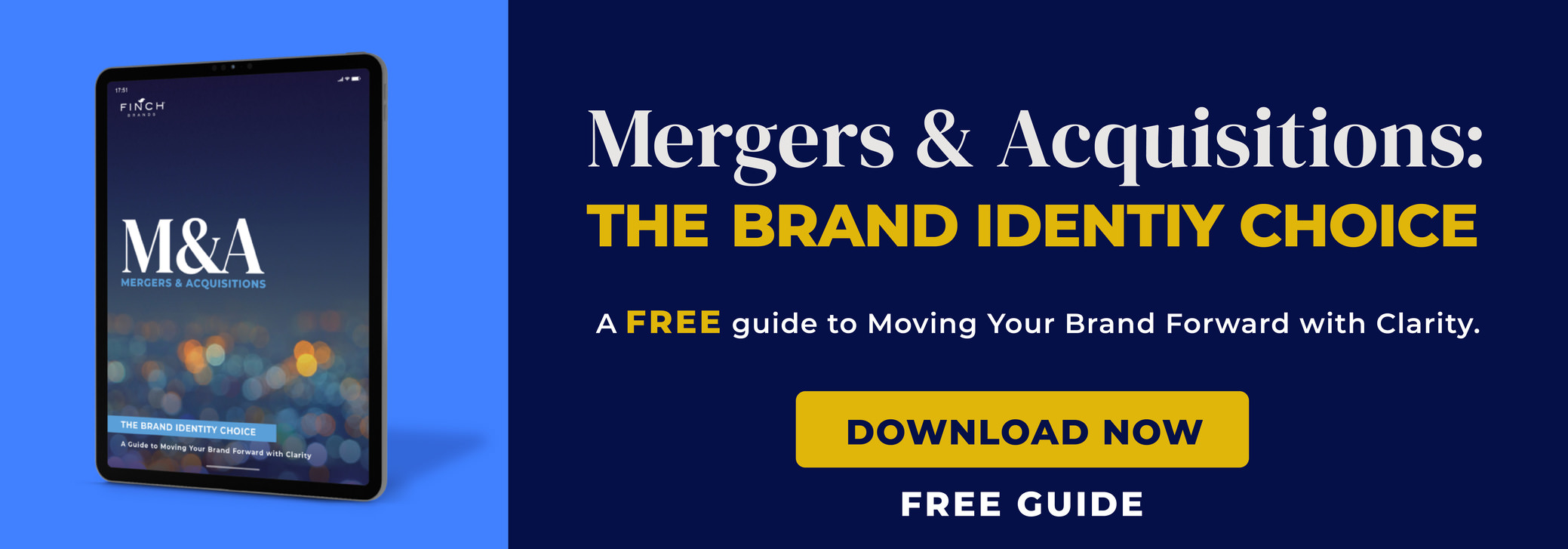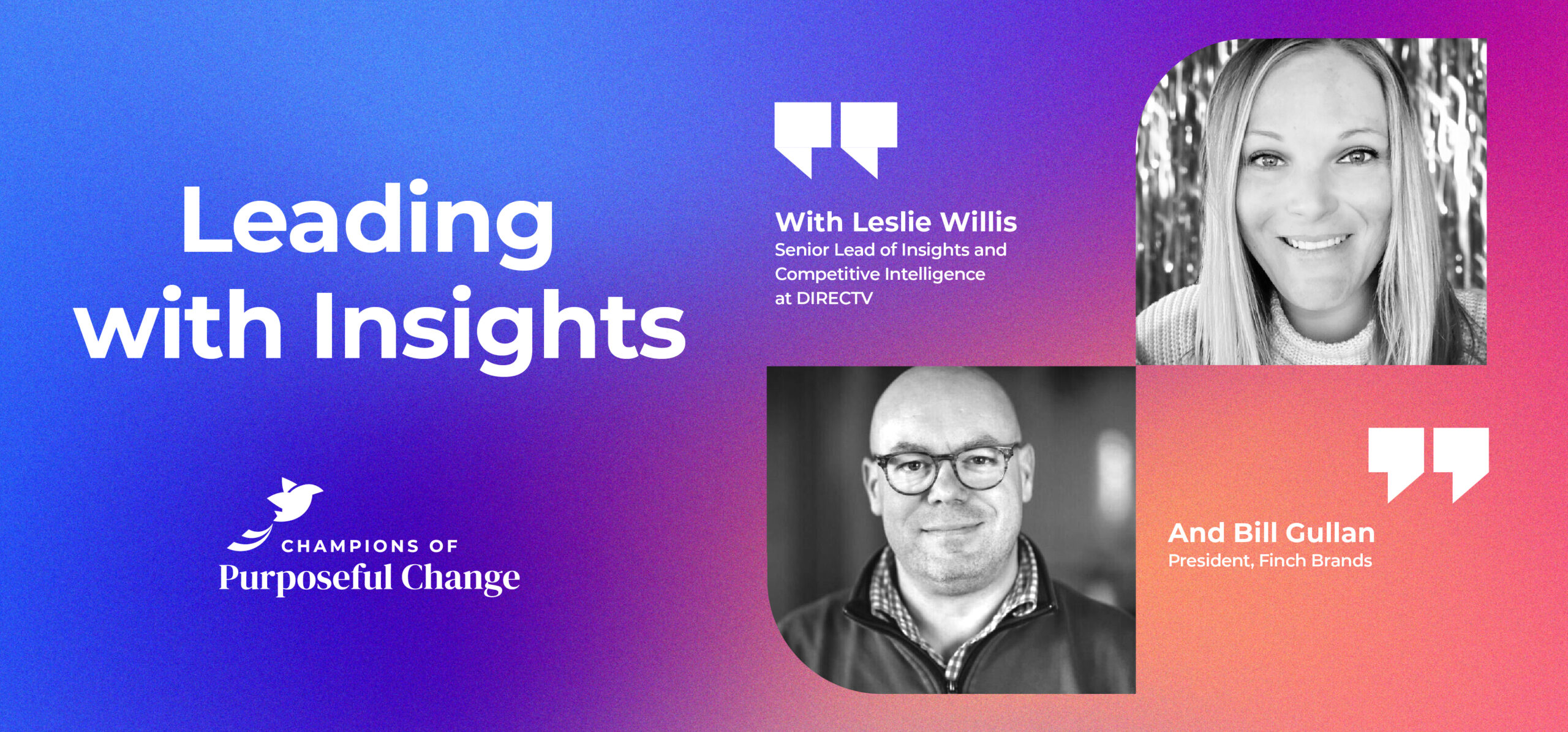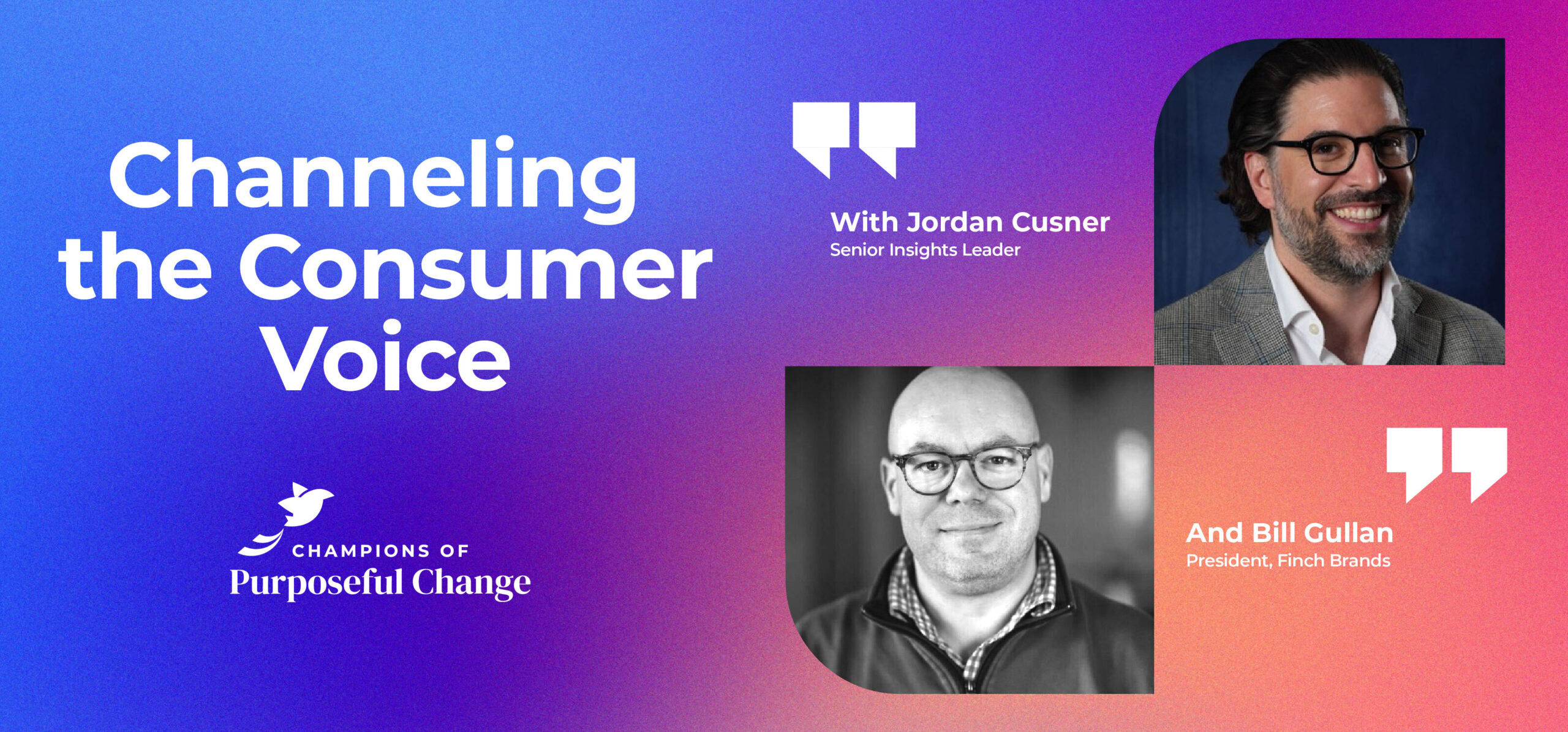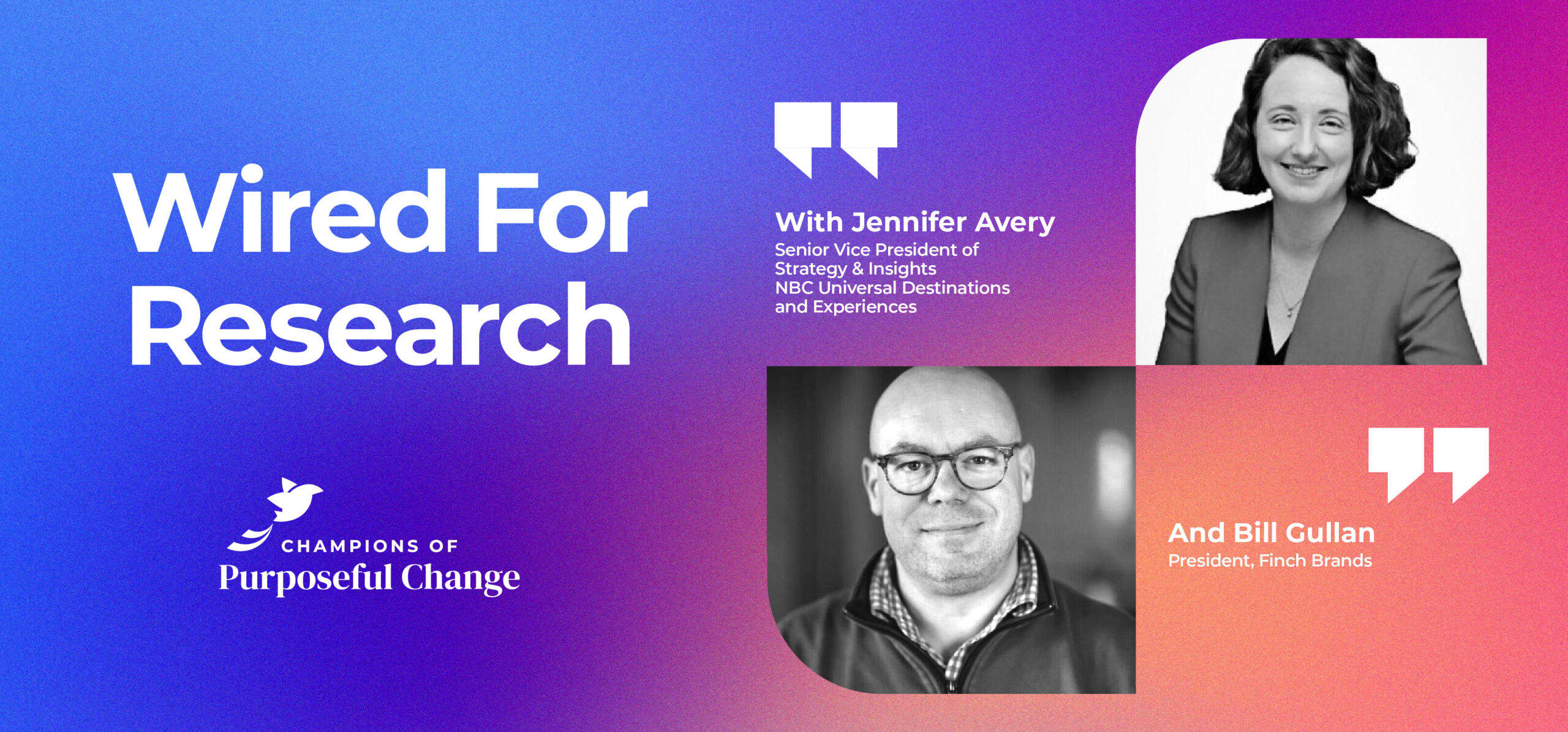One Big Idea: Boom or Bust – Branding After M&A

With the increase of M&A activity every year, its shocking to hear that more than half of these decisions fail to create value for organizations. One often overlooked factor in a merger or acquisition’s success is the brand decision. In this episode, we look at the need for practitioners to understand the role the brand plays in a M&A situation. If you like our podcast, please subscribe and leave us a rating!
Podcast: Play in new window | Download Subscribe: iTunes | RSS
Transcription:
Bill Gullan: Greetings one and all. This is Real-World Branding. I’m Bill Gullan, President of Finch Brands, and this One Big Idea. Happy new year to all of you. For the next little while in this space we’re going to focus on a particular issue that is of great importance to our clients and our industry in general that has to do with a situation that many folks find themselves in and a way that we found to think through key questions that are important to very high leverage topics related to nomenclature and identity and everything else.
Our real focus is going to be how to make really important choices at the level of the brand when one is on the heels of a merger and acquisition, an M&A type of situation, a transaction that throws into question the critical elements of the brand approach. To help us talk through this, today we’re going to speak with John Ferreira, Finch Brands’ Senior Vice-President and General Manager, about the importance of this issue.
We’re going to be back with John in a couple of weeks to get more specific on various ways to deal with it, and in between, next week, we’ll have an interview with a client and friend of the company who through the growth of her business has dealt in a very practical way with brand choices related to M&A. Let’s start. John, welcome back … It’s been a while, but back to the show.
John Ferreira: It’s good to be here.
Bill: We’re glad to have you. As we were thinking about M&A brand architecture, why does this matter and why do you think it’s been such an important topic for us and our clients in recent months?
John: I think it matters because these are incredibly high stakes decisions. You see in the news merger and acquisition activity is just increasing and increasing, especially in industries like health care, health insurance, telecommunications, financial services, especially banking. It’s just that snowball that keeps rolling down the hill. It’s a major factor in the global economy.
What’s concerning is that with the volume of merger and acquisition activity that happens, the majority of them actually are not successful. Estimates, depending upon which study you’re looking at, are anywhere from 50% or 80% of mergers and acquisitions failing. It begs the question why?
I think a lot of C-suite executives look at operational considerations, when in reality if you pull back the curtain they don’t work because they don’t work for your customers. Your customers experience your service through the brand.
It’s an incredibly important and often overlooked aspect of why so many mergers fail, and over the last 20 years there are studies that show north of $200 billion in value has been destroyed. What is that? Like a quarter of the size of the stimulus coming out of the financial crisis. I mean insane amounts of money are just set on fire, and we think there’s a major blind spot out there in business leadership that we’re looking to help clear up.
Bill: When it comes to the general brand toolkit, the beliefs and rules of the road to how to build strong brands, it seems like we’ve been developing thinking around the set of choices in an M&A situation that certainly incorporate those tools, but advances them. Is there a special set of considerations that one ought to think about when it’s an M&A situation as opposed to just a garden variety brand development exercise?
John: Yeah. There is a ton of great research out there being done in academia. Part of what we’re doing is to weave that together and build in some of our own thinking on top of it and simplify it and bring it out so it can make a difference in the real world.
If you think about, just at a fundamental level the impact of the brand decision when you’re in a merger and acquisition situation, it is a signal and there are four major audiences that you’re sending a strong signal to, whether you realize it or not. First is the employees that are involved in the situation within either company or either organization. They’re the first people that are immediately affected by this and they’re asking questions. Really all the groups that I’m going to talk to here, they’re asking questions of where’s the firm headed? What’s changing? What’s staying the same? Does the firm value me and my interests?
In the case of employees, that question leads to the decision of do I want to stick around? Am I part of the picture here? That has incredible implications for employee engagement, which is greatly linked to the productivity of the firm. Are you starting out of the gates in a trust deficit, which would lead to a productivity deficit, which is going to lead to declining efficacy of your customer service and customer experience operation?
In many acquisition situations the employees that are coming along for the ride make up a substantial component of the value of that transaction. Certainly, IP is a big piece of it. You’re buying the customers of their firm, but you’re also bringing over the employees that are making it happen, so employees are a key audience here.
Then, obviously, the customers, which are greatly affected by what happens with the employees. You’re disrupting a good thing there. They made a decision to go with a particular company. There’s some trust related there both on a brand level as well as with the people that they interact with.
If it’s a service type situation, then they want to know where is the firm headed? What’s changing? What’s staying the same? Is quality changing? Is quality going to be taken out? Will the sales rep that I’m used to going to still be the same person or are they going away? Does the firm value me as a customer in the same way that the old firm that I consciously chose did?
Investors … The investor community, the signal that you send out is going to show them how this thing is going to unfold. Is one brand going to be superseding the other and the other one is just disappearing? Operationally the brand that you choose sends a lot of signals there.
Lastly, future acquisition candidates … The decisions that you make, how you treat the brand and how you treat the people are going to affect how other potential future acquisition candidates perceive you as a company and whether they want to be part of that in the future.
It’s incredibly important. It affects all the major stakeholder groups that create value in the business. What we’re trying to do is to really help companies approach this in a smart and strategic way, so that they can make better decisions and create value instead of destroying it.
Bill: Yeah. That’s great. When we talk about brand here, we’re talking about … It sounds like we’re talking about what the go forward name is, what the look and feel is. Is that it, or is it deeper than that? When we talk about brand choices, I mean what are the kind of key choices?
John: That is … The decision there is the symbol of the change that will be occurring within the merger or acquisition scenario. It’s a symbolic decision that people will interpret in all sorts of ways as far as how it’s going to affect them.
Yeah, there are really four different high level types of decisions that you can make in these situations with 10 different choices within them. It’s actually a much more complex and interesting strategic chessboard than you might think at the outset when we started studying this space. I was surprised at how many different choices that executives have in these situations.
Really if you think of it as a continuum, one option is to change nothing, just status quo. You’re acquiring another brand and keep them separate.
Bill: Well, based on what you said earlier about the strength of the signal, one probably would be scared to change anything to alienate an employee or a customer, but I think what you’re going to say is that the investment thesis, the M&A thesis, may not be realized unless one goes about it.
John: Yeah. I mean that’s the most conservative scenario. I should say at the outset, the right choice here is completely situationally specific. In some cases it is the right decision, like when P&G acquired Gillette. If they put some other brand on top of the razors, that would have been a horrific business decision, where there was a powerful brand with a tremendous amount of trust.

Bill: Destroying equity just right off the bat.
John: That was absolutely the right decision in that situation. For other companies it would be absolutely the wrong decision, because you wouldn’t yield the benefit of potential synergies. That’s one camp, though. On the other extreme, the most aggressive scenario would be creating a totally new brand, so both of the prior brands go away. When Verizon was created-
Bill: I remember that, yeah, GTE and Bell Atlantic. That was also a time of great industry change. I mean the telephone business was moving in a mobile direction, so both merger partners probably were regionally known, though not more widely, and also maybe a symbol of what was becoming a legacy business.

John: I mean it’s a bold and progressive approach and in some cases, in particular if you’re trying to make a statement about taking a leap forward into the future or really doubling down on innovation, that can be the right strategy, but it’s highly disruptive in nature. It needs to be strongly supported generally with large budgets. It’s risky, but the potential reward is pretty high, so very situationally specific there.
Then there are close cousins in between those two options. Next to no change would be four different types of strategies, or a bucket that we would call Fusion of bringing two brands together through various combinations of the names coming together, like an ExxonMobil, or a name and a symbol coming together, like in the case of Boeing, or having one brand endorse another brand, such as CareerBuilder when it was acquired by Gannett. There are lots of examples within those, and fusion is a really interesting approach of bringing together the best of both worlds and is a relatively lower risk type approach.

Then one that’s called Stronger Horse is a little further down the aggressiveness spectrum, where one brand ends up superseding another. That can be the acquirer brand overtakes the one being acquired. It can be vice versa if you’re finding an underleveraged and undervalued brand and you’re another company that maybe had built up a very strong business without having a high level of awareness or being an everyday household name.
Sometimes there’s sort of a phased approach within there of two brands coming together for some period of time and there’s an endorsement and the brands are seen together and then one ends up taking over the other.
Each of these, it’s a spectrum of how much risk do you want to take, and the right decision. It just depends on the situation. I can say that there is some data and some research out there that shows that the most popular decisions within C-suites are also the ones that tend to destroy the most value.
Bill: Interesting.
John: I won’t go into the details, which specific scenarios are those, but yeah, I think that just illustrates the importance of really going into this thinking about the signal that’s being sent through all the various stakeholder audiences and doing the right research to be eyes wide open on what the equity that’s tied up with specific brands is, what’s the emotional affinity both in terms of the customer base as well as the employees, and where can you find those levers to use the brand to unlock the maximum potential value of the merger and acquisition.
Bill: Yeah. Next time we’re together we’re going to go through those 10 different … I guess there’s four major types, but then within them 10 different flavors of choice when it comes to brand architecture. We’re going to go into them specifically, talk about pros and cons.
Let’s close here with … I’m asking you to speculate I guess. I’m not sure how much research there is around this, but why is it that … Is it ego? Is it speed? Is it sort of inadequate understanding? Why is it that this set of really key choices is so frequently either gotten wrong or overlooked or just never launched when it comes to M&A? Do you have a sense of that?
For example, I can think of one client right now who was acquiring a bunch of different companies and knew at some point in their heart that there were efficiencies in terms of cross-sell and up-sell and internal operations over time as they were acquiring companies, but just hadn’t gotten to it, so they were all operating separately. Is that what you think is a primary reason? Why might this be such an overlooked type of thing?
John: I think it’s a mix of reasons. I think one of them is that heads of firms are by nature decisive for the most part or they wouldn’t have gotten where they’re at, so they want to move things forward and make a decision. Some of the, particularly the more aggressive choices within your portfolio of choices here are highly decisive. You could say, ‘Hey, make a decision, settled, done. Let’s go. Do it,’ and then you can unlock all the operational steps to make that happen.
It feels good to be decisive, but that can also be dangerous if you’re making the wrong choice and very efficiently marching down the wrong path. I think also if you look at the CEOs across the landscape, and this definitely varies by industry, but oftentimes they’re coming from an operational or a financial background where they haven’t had a rotation within marketing or within the sphere of influence where they’ve had direct responsibility for managing the brand.
In that case it makes total and complete sense that they might not understand the full three-dimensionality of the value of the brand and the brand as an expression of expectation for consumers and customers and the type of signal that that decision is going to send. I would think those are probably two of the bigger factors there that are causing this to be a very real problem in the world of M&A today.
Bill: Right. That’s a good place to leave it. John Ferreira, SVP/GM at Finch Brands, thank you for your time and your insight. We and our colleagues have been in the foxhole helping untangle some of these things. When we’re together next time we’ll talk about specific types of choice around brand architecture as well as maybe how one goes about it.
You made the point that this is a situationally specific decision that has to do with the unique rhythms and dynamics of the business in question, and maybe we’ll talk about how our listeners can think about this if it comes up in their own professional lives, but we’ll leave it here, signing off from the Cradle of Liberty.






